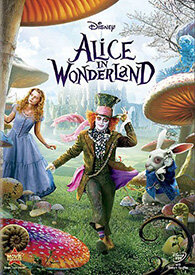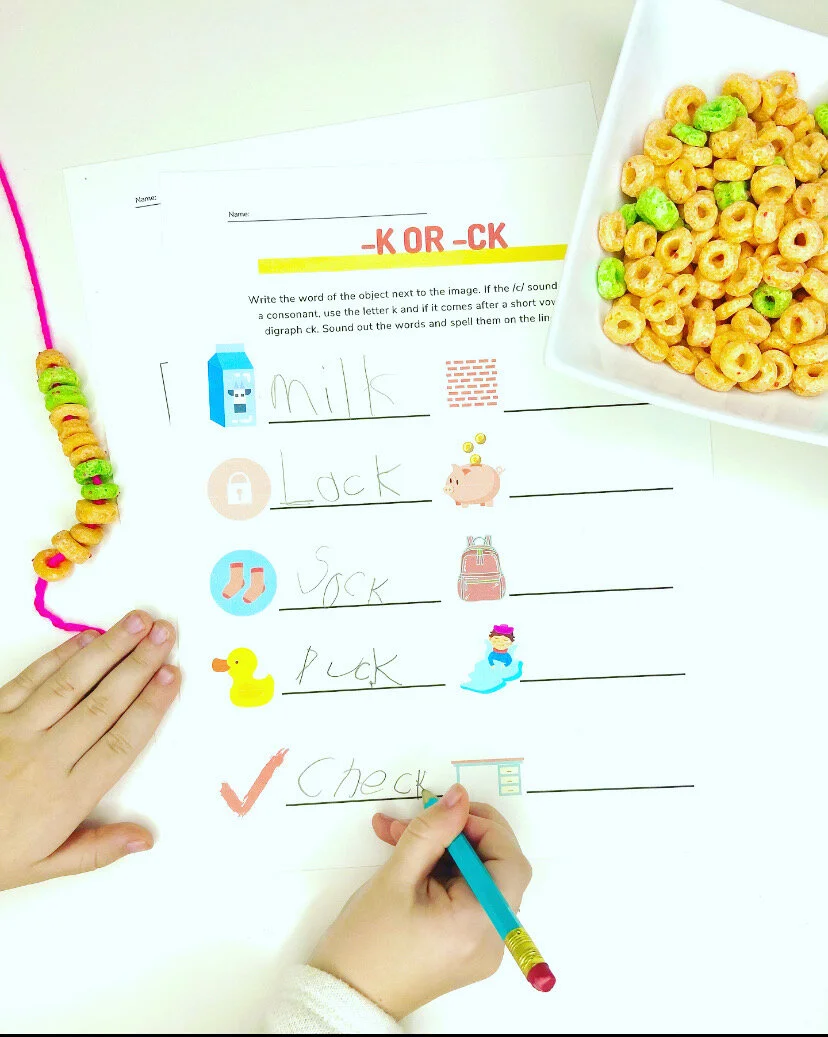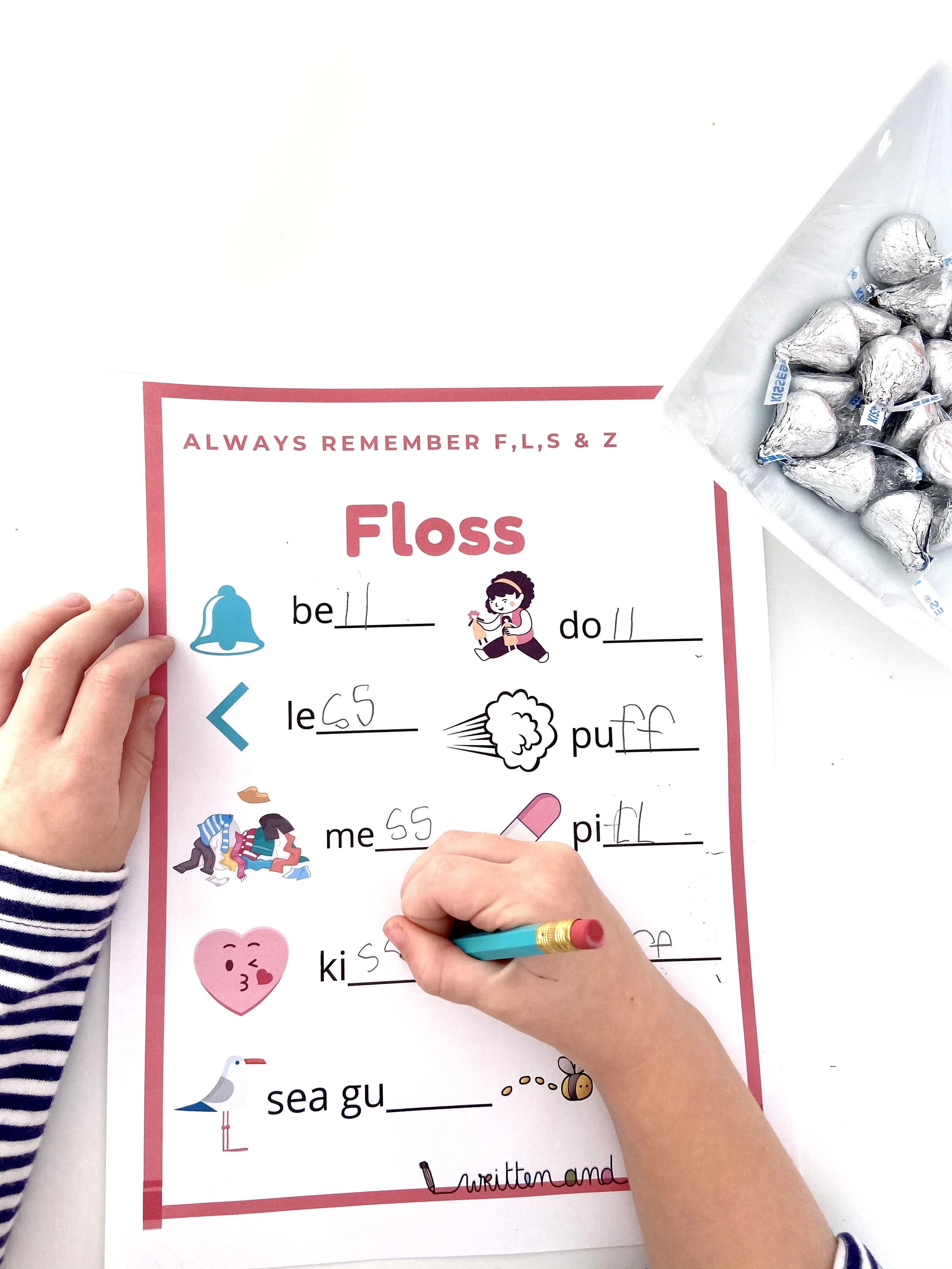Building short vowel CVC words
/Playing a game while eating a snack or a meal, takes the “homework” feel out of teaching literacy. For more Eat Your Words activities follow along on Instagram.
Build Short Vowel CVC Words
Do you sometimes feel like your child needs to go back to the basics to practice foundational spelling rules? I’m taking it back to the beginning of the phonics sequence for Eat Your Words this week. (Don't miss the free printable.)
Materials:
All you will need is two different color markers and paper.
Steps:
First, write all five vowels and cut them out in squares.
Write a few three-letter words, leaving out the vowel. For example, m_p (can become mop or map) c_t can become cut, cat, cot. Others you can try d_b, h_d, l_d, n_p, p_t, r_d, r_g, s_t, t_b, v_t, z_p. Anything works and they even need to be real words! I avoid words that end in n or m because it changes the sound of the short a and can be confusing, but it's still doable if you want to try it.
Let your child move the vowels around and see what words they can make.
Finally, draw and spell the words!
If you want to go the extra mile, pair it with a snack that also has a short vowel pair this activity like mixed nuts or Chex Mix.
Here's what you are teaching (without teaching):
Remind kids that short vowel sounds can be held in one breath (unlike long vowels that say their name). Demonstrate a aaaaaaaaple, e eeeeeee elephant, I iiiiiiiiguana, ooooooooctupus, uuuuuumbrella.
Remind kids that every single word must have a vowel.
Finally, to help kids transfer these vowel sounds into their writing, it's helpful to have a visual in your house. Click the link in my profile to download one for free.
Enjoy!
















































































































































































































